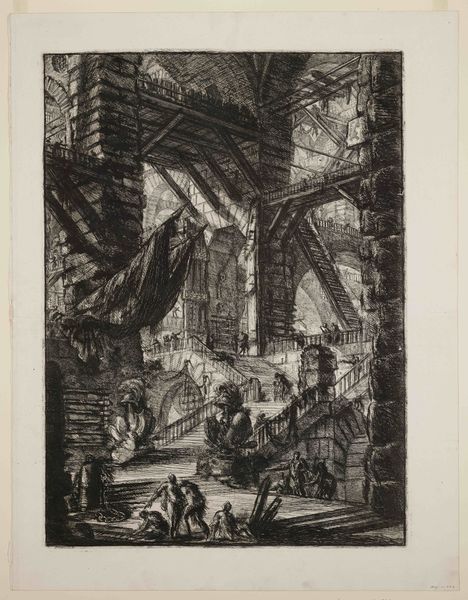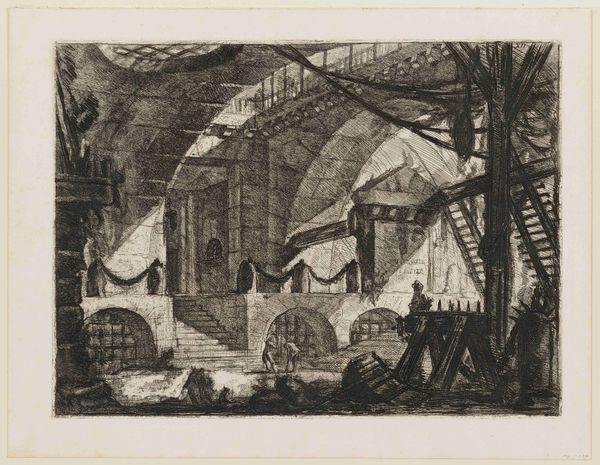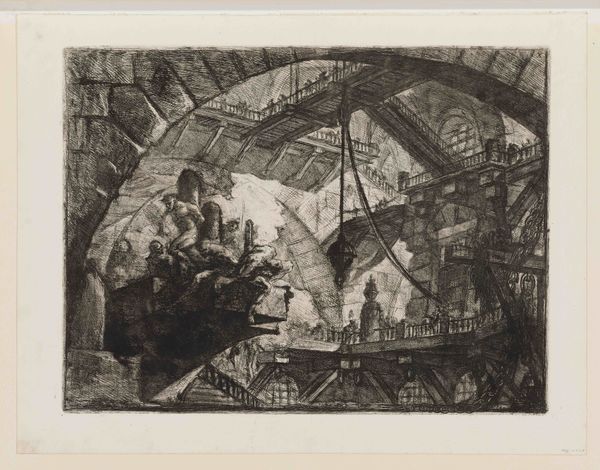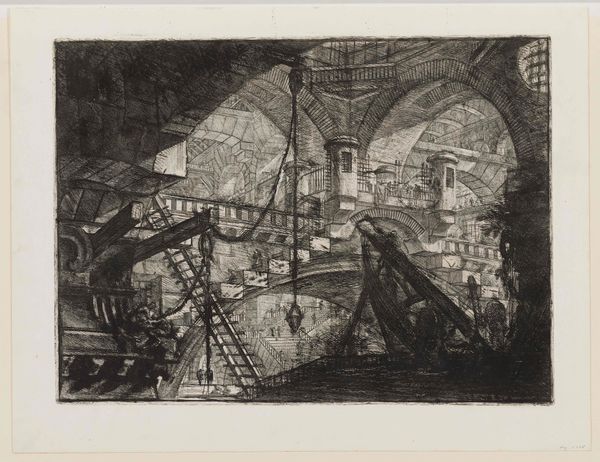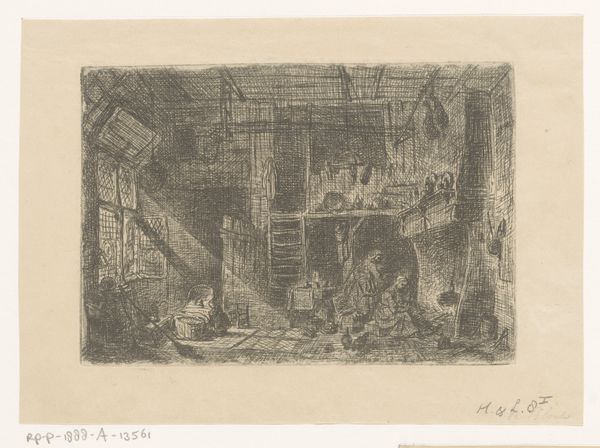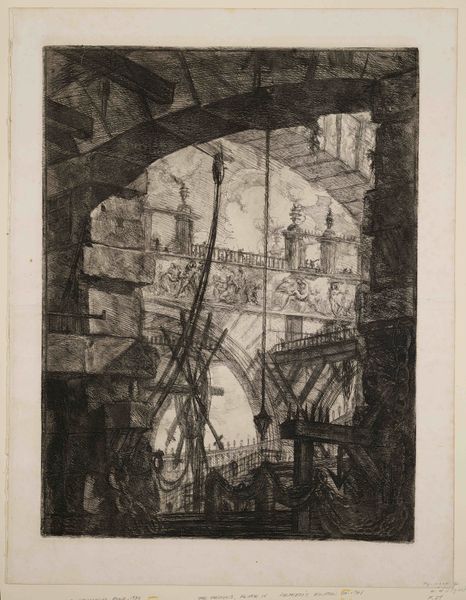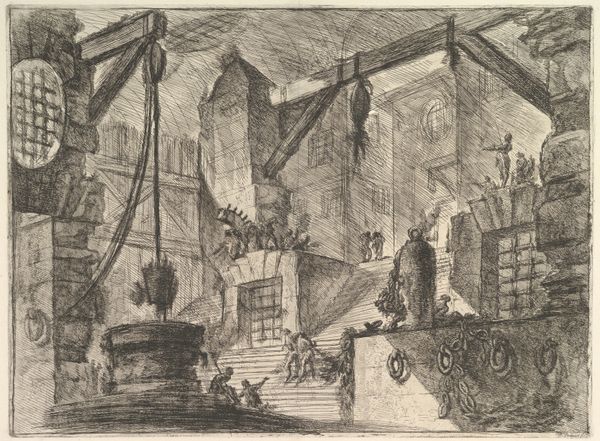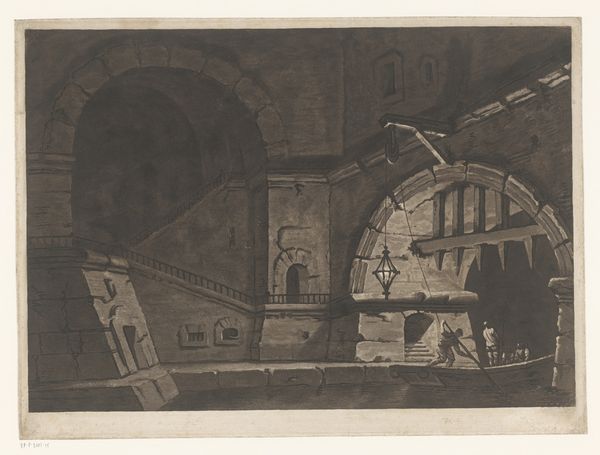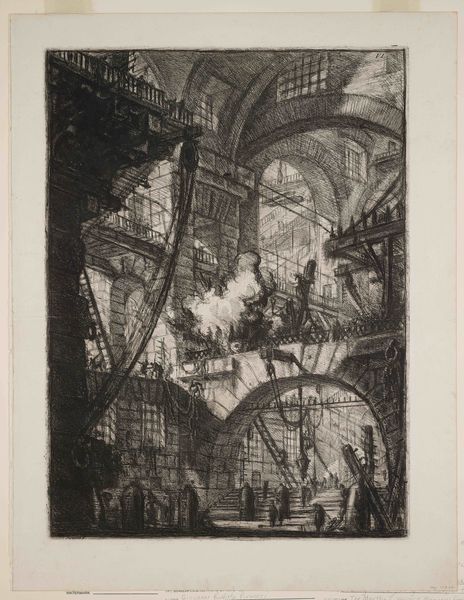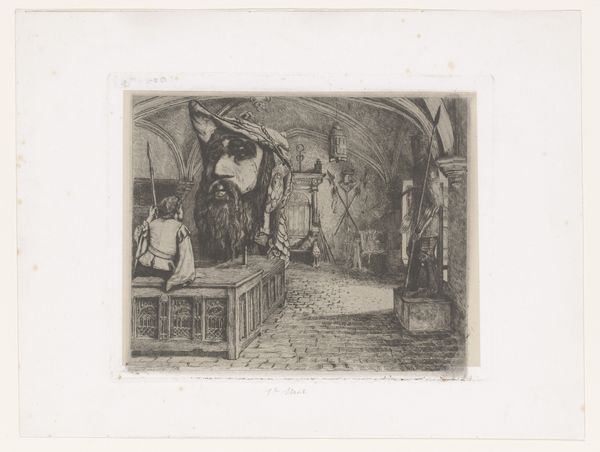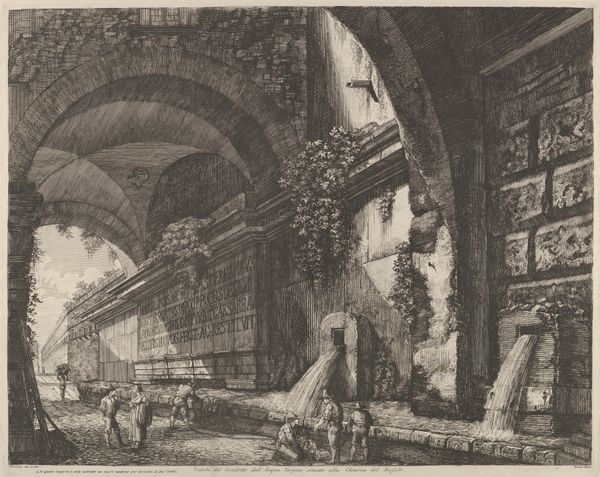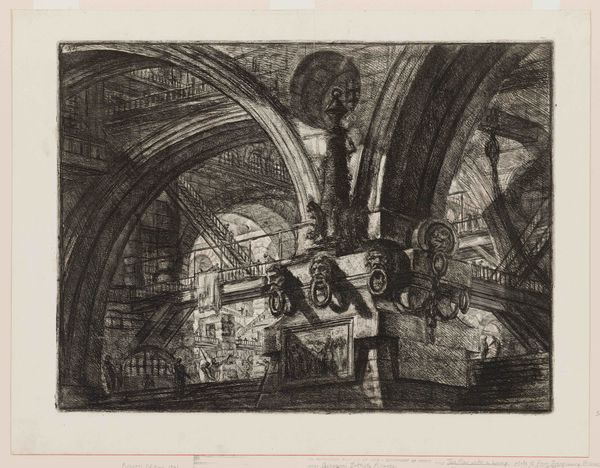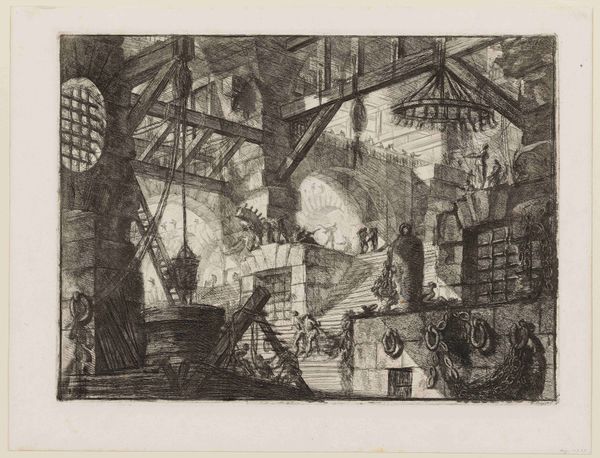
Dimensions: 16 1/8 x 21 3/4 in. (40.96 x 55.25 cm) (plate)
Copyright: Public Domain
Editor: This is "The Pier with Chains," an etching by Giovanni Battista Piranesi from around 1761. It's incredibly detailed! All these lines and shadows create this brooding, almost oppressive atmosphere. What do you make of this work? Curator: Ah, Piranesi! He understood the drama of a line, didn't he? This print reminds me of a fever dream, all labyrinthine architecture and looming shadows. The composition is key: that almost dizzying perspective sucks you right into this impossible space. Don’t you feel that vertigo too? Editor: Definitely, the scale feels off, exaggerated. It's like a stage set, but for a play that never begins. Is that something typical of the Baroque style? Curator: Exactly! The Baroque, with its flair for the dramatic, its love of contrast… Piranesi takes it to another level. But here’s a twist – while the Baroque loved to impress, I sense Piranesi is also hinting at the futility of grand designs, a crumbling grandeur. These monumental structures seem almost...purposefully useless. Editor: So, is he celebrating this kind of architecture, or critiquing it? Curator: Maybe both. Perhaps it’s a melancholic reflection, the ruins embodying the passage of time, reminding us that even the mightiest empires fade. Think of it as a very elaborate, slightly morbid postcard from the past! What do you feel about these ruins? Editor: I get it; it's both grand and gloomy! The detail suggests celebration, but that pervasive darkness implies the opposite. Thanks, it's helpful to consider those conflicting viewpoints! Curator: Absolutely. Art's always a dialogue, isn't it? A conversation between the artist, the work, and us. Now, doesn't this print make you want to explore other etchings and engravings of the time? I feel like I want to revisit some of these.
Comments
minneapolisinstituteofart almost 2 years ago
⋮
The inscriptions on the tablets are based on the ancient writer Livy’s History of Rome (27-9 BCE). In part, the ominous phrases read “to terrify . . .,” “infamous wickedness . . .,” and “thus to treason and evil conduct.” Whether or not these allusions to classical texts are meant to locate the Prisons in antiquity, they address the darkest recesses of the viewer’s consciousness.
Join the conversation
Join millions of artists and users on Artera today and experience the ultimate creative platform.
